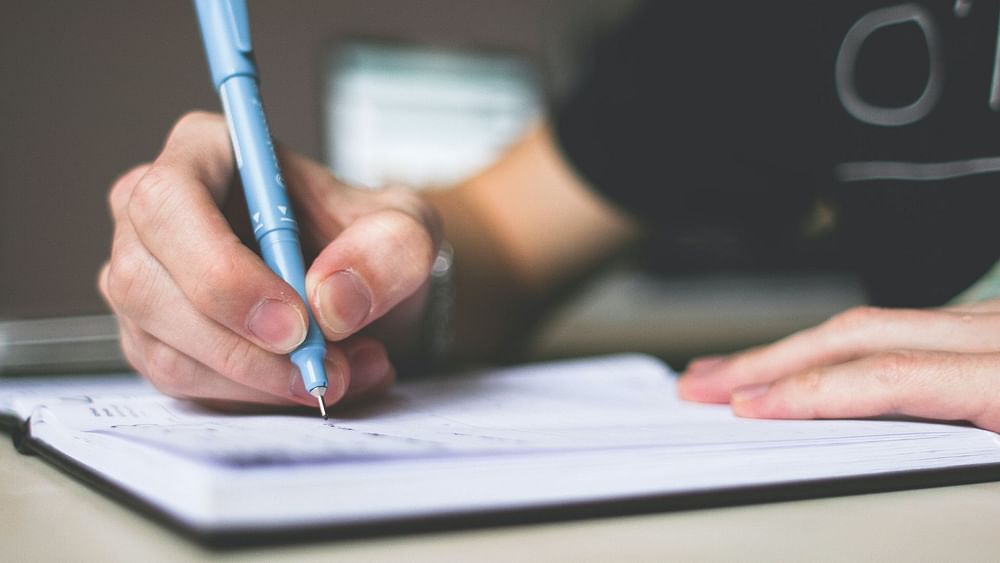Learning English is hard for native English speakers, let alone for those who are learning it as a second language. Even though it can be daunting to learn all the grammar rules required to speak English fluently, it is well worth the effort, and you will reap benefits galore.
There are considerable advantages to learning English as a second language; from more effective communication in school, business, and other social settings, to enhanced confidence and brain function, the benefits of learning English outweigh the hardships.
One of the most challenging concepts for those learning English as a second language is mastering the various tenses. This is because so many rules seem to contradict one another. However, with a bit of practice and patience, you will be able to understand and use tenses correctly in no time.
In this article, we will cover everything you need to know about the rules of tenses so we can help you communicate more fluently both in spoken and written English and help you prepare for any English assessment tests you may need to take in the future.
Are you ready to learn? Great – let’s put our English thinking caps on and begin!
Table of Contents
What are tenses?

Before we break down the rules surrounding each type of tense, we should start by discussing the basics. First, you might ask, what are tenses, and why is it important we know about them?
In short, tenses are verb forms that indicate when an action is taking place. For example, the present tense might be used to describe actions happening right now, whereas the past tense would be more appropriate for describing events that have already occurred.
There are also future tenses, which deal with actions yet to come. Why is it essential to use the correct tense? Using tenses correctly can help you communicate your ideas clearly and precisely.
Learning how to master these tenses rules is also crucial as they will prepare you to pass any English assessment tests required by many educational institutions for students wishing to study abroad.
Now that we know what tenses are and why they matter let’s take a closer look at each type.
The big three
The easiest way to learn about tenses is to divide them into their most basic forms and describe their function. The three basic tenses are:
- Present tense
- Past tense
- Future tense
Each tense serves a specific purpose in the English language, so let’s delve deeper and investigate when to use each.
Present tense
We use present tense to:
- Describe what is happening now, e.g., I am writing an article about tenses.
- Describe what happens regularly, e.g., We have English class every day from Monday to Friday.
- Express feelings or opinions, e.g., In my opinion, learning grammar can be pretty tedious.
- Describe what is true in general, e.g., The sun rises in the east and sets in the west.
Make sense so far? Just remember that the present tense deals with the here and now.
Past tense
The primary use of past tense is to describe:
- Events that have already happened
- Habits in the past, e.g., I used to go for a run every morning
We’ve covered the present and the past tenses, and now we move on to, you guessed it, the future.
Future tense
We use the future tense to:
- Describe what is going to happen, e.g., The sun will rise at 6 am tomorrow;
- Make predictions, e.g., I think it will rain this afternoon;
- Express intentions, e.g., I will help you with your homework after school;
- Give commands, e.g., You will finish your dinner now!
Now that we’ve got our three basic tenses down and discussed how we use and form them, it’s time to get into the nitty-gritty. Let’s take a closer look at each type to gain a deeper understanding. Don’t worry; just breathe; we’ve got your back!
Types of present tense

Present tense can be broken down into:
- Simple present
- Present progressive
- Present perfect
- Present perfect progressive
Let’s dive deeper into each type, looking at their uses, how to form them, and examples.
Simple present
The simple present tense is just that: simple. It’s used to describe an action happening now, habits, and always true facts.
The present tense conjugation of regular verbs is pretty straightforward – just add an -s to the end of the word if the subject is he, she, or it.
Example:
He eats tacos every Tuesday.
Present progressive
The present progressive tense is used to describe
- An action that is currently happening
- An ongoing action
- A future event that has already been planned
To form the present progressive tense, you take the present tense of the verb “to be” (I am, you are, he/she/it is, we are, they are) and add the present participle of the main verb (-ing).
Example:
He is eating dinner.
Present perfect tense
The present perfect tense is used to indicate a past event that has present consequences.
The present perfect is formed using the present tense of the verb “have” and the past participle of the main verb.
The past participle is often formed by adding “ed” to regular verbs, as in “walked,” “read,” or “studied.”
For irregular verbs, consult a dictionary for the correct past participle form, as in “written,” “gone,” or “swum.”
The present perfect is used with the adverbs “just,” “already,” and “yet.” It can also be used with the word “ever” to ask about experience.
Present perfect progressive
The present perfect progressive tense is used to:
- Describe an action that started in the past and is still happening
- Describe an action that occurred in the past and is still relevant
Example:
I have been studying English for two years.
We can use the present perfect progressive tense to describe an action that started in the past and is still happening.
Example:
I have been studying English for two years.
The present perfect progressive tense can also describe an action that happened in the past and is still relevant.
Example:
She has been writing a book for six months.
Types of past tense

There are three main types of past tense in English:
- Simple Past Tense
- Past Continuous Tense
- Past Perfect Tense
Simple past tense
Simple past tense can be applied:
- To describe an action that happened in the past and is now over
- To express an activity that occurred in the past and continues into the present
- To give background information about something that will be talked about in the present or future
This tense is formed by adding -ed to the base form of the verb, as in “I played soccer” or “We walked to school.” We can also use the simple past tense with Irregular verbs, which are verbs that don’t follow the standard rules for conjugation.
Past continuous tense
Past continuous tense is utilized:
- To describe an action that was happening at a specific time in the past
- To express an action that was in progress over a period of time
Example:
I was studying French when she called.
You can form past continuous tense by using was/were + verb-ing.
Example:
They were watching TV when I arrived.
Past perfect tense
The past perfect tense describes an event that happened before another event in the past. It’s helpful to use the past perfect tense when you want to be very clear about the order of events.
Imagine that you’re telling a friend about your weekend. You might say: I had a great time on Saturday. I woke up early, went for a run, and then met some friends for lunch. In the afternoon, I went to the park and read a book.
In this sentence, you’re using the past perfect tense (had a great time) to describe an event that happened before another event (went for a run). This makes it clear that you did these things in order.
The past perfect tense is made up of two parts: the past tense of “to have” (had) and the past participle of the main verb (a great time)
To form the past perfect tense, you use had and the past participle of the verb (usually -ed, but irregular verbs have different past participles):
- Add -ed to regular verbs: work – worked, live – lived
- For irregular verbs, look up the past simple and past participle forms in a good dictionary, e.g., We had arrived before you came. (= we arrived, and then you came) I hadn't eaten all day, so I was starving. (= I didn't eat, and then later, I was hungry)
Types of future tense

There are four types of future tense:
- Future Simple
- Future Continuous
- Future Perfect
- Future Perfect Continuous
Let’s dive deeper into the details for each!
Future simple tense
The future simple tense describes an action that will happen in the future. This tense is formed using the word "will," followed by the verb's infinitive form.
Example:
I will go to the store.
The future simple tense can also be used to predict what will happen.
Example:
The sun will rise at 6:00 am.
In addition, the future simple tense is often used with time expressions such as "tomorrow," "next week," or "in six months."
It can also be used without a time expression, expressing a future general action.
Example:
John will arrive soon.
Future continuous tense
The future continuous tense describes an action that will be happening at some point in the future.
This tense is formed using the auxiliary verb "will" and the present participle of the main verb.
Example:
I will be playing tennis tomorrow.
We can also use the future continuous tense to describe an ongoing action that will take place in the future.
Example:
I will be studying for my exams next week.
Future perfect tense
The future perfect tense is used to talk about actions that will be completed before a specific time in the future.
This tense is formed by using the appropriate form of the verb “to have” plus the past participle of the main verb.
Example:
I will have finished my homework by six o’clock tonight.
Future perfect continuous tense
The future perfect continuous tense describes an action that will begin before a specific time in the future and continue until that time.
It is also used to describe an action that will happen regularly in the future.
You form future perfect Continuous tense by using will have been + verb-ing.
Example:
I will have been studying English for five years by the time I finish high school.
Also read: Daily used English words
No more tension about tenses
We hope that by breaking down the types of tenses and the rules governing their use, you will feel more comfortable using them daily. If you feel overwhelmed, take your time and try to make learning fun by incorporating games and strategies into your practice.
Using tricks and games like Duolingo to enhance your learning and practice the rules of tenses is a great start to studying abroad, excelling in business, or simply communicating more efficiently.
Hopefully, this has explained everything you need to know about the rules of tenses so you won’t need to be tense about learning English. Remember: practice makes perfect!



